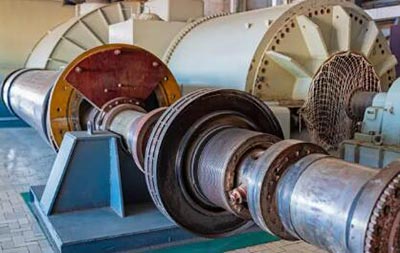What is the ball grinding mill process?
Views: 277 Update Date:Sep 06 , 2024
A ball grinding mill is a type of grinder commonly used for grinding and blending materials in various industries, such as mineral processing, cement production, and pharmaceuticals. The basic working principle involves using steel balls or ceramic balls as grinding media, which are enclosed in a rotating cylindrical chamber.
- Grinding media (steel or ceramic balls) are added to assist in breaking down the materials.
- Rotation speed is critical; a slow speed causes the balls to cascade, while a fast speed causes the balls to be lifted and dropped, resulting in more efficient grinding.
- The repetitive impact reduces the material into fine particles.
- The grinding process continues until the desired particle size is reached.
- Screening or sieving may be used afterward to ensure the correct particle size.
- Cement Production: For producing finely ground cement powder.
- Pharmaceuticals: For blending and refining drug powders.
- Chemical Processing: To grind chemicals into fine powders for industrial use.
By controlling these variables, operators can optimize the efficiency and output of the ball grinding mill process for specific applications.
Prev: Whose Forged Steel Ball and Grinding Rod are Right for You?
Next: How do you measure steel balls?
Here's a breakdown of the ball grinding mill process:
1. Loading the Mill
- Materials such as ores, chemicals, or raw materials are fed into the mill.- Grinding media (steel or ceramic balls) are added to assist in breaking down the materials.
2. Rotating the Mill
- The cylindrical chamber of the mill rotates around its horizontal axis.- Rotation speed is critical; a slow speed causes the balls to cascade, while a fast speed causes the balls to be lifted and dropped, resulting in more efficient grinding.
3. Impact and Friction
- As the mill rotates, the grinding media collide with the materials, causing mechanical impact and friction.- The repetitive impact reduces the material into fine particles.
4. Grinding
- The materials are ground down into a fine powder or smaller granules depending on the desired output.- The grinding process continues until the desired particle size is reached.
5. Discharge
- Once the grinding process is complete, the fine material is discharged from the mill, either through a grid (grate discharge) or by overflow (overflow discharge).- Screening or sieving may be used afterward to ensure the correct particle size.
6. Circulation (Optional)
- Some setups use a closed-circuit system where larger particles are recirculated into the mill for further grinding.

Factors Affecting Ball Mill Performance
1. Ball Size and Material:
- The size and material of the grinding balls (steel, ceramic) affect grinding efficiency.2. Rotation Speed:
- The speed at which the mill rotates influences the grinding process. Too fast or too slow can reduce the efficiency.3. Material Feed Size:
- Finer materials will grind more efficiently, whereas larger chunks may take longer to break down.4. Duration of Milling:
- The time the materials are in the mill determines the final particle size.Applications of Ball Grinding Mills
- Mining: For grinding ores and extracting minerals.- Cement Production: For producing finely ground cement powder.
- Pharmaceuticals: For blending and refining drug powders.
- Chemical Processing: To grind chemicals into fine powders for industrial use.
By controlling these variables, operators can optimize the efficiency and output of the ball grinding mill process for specific applications.





